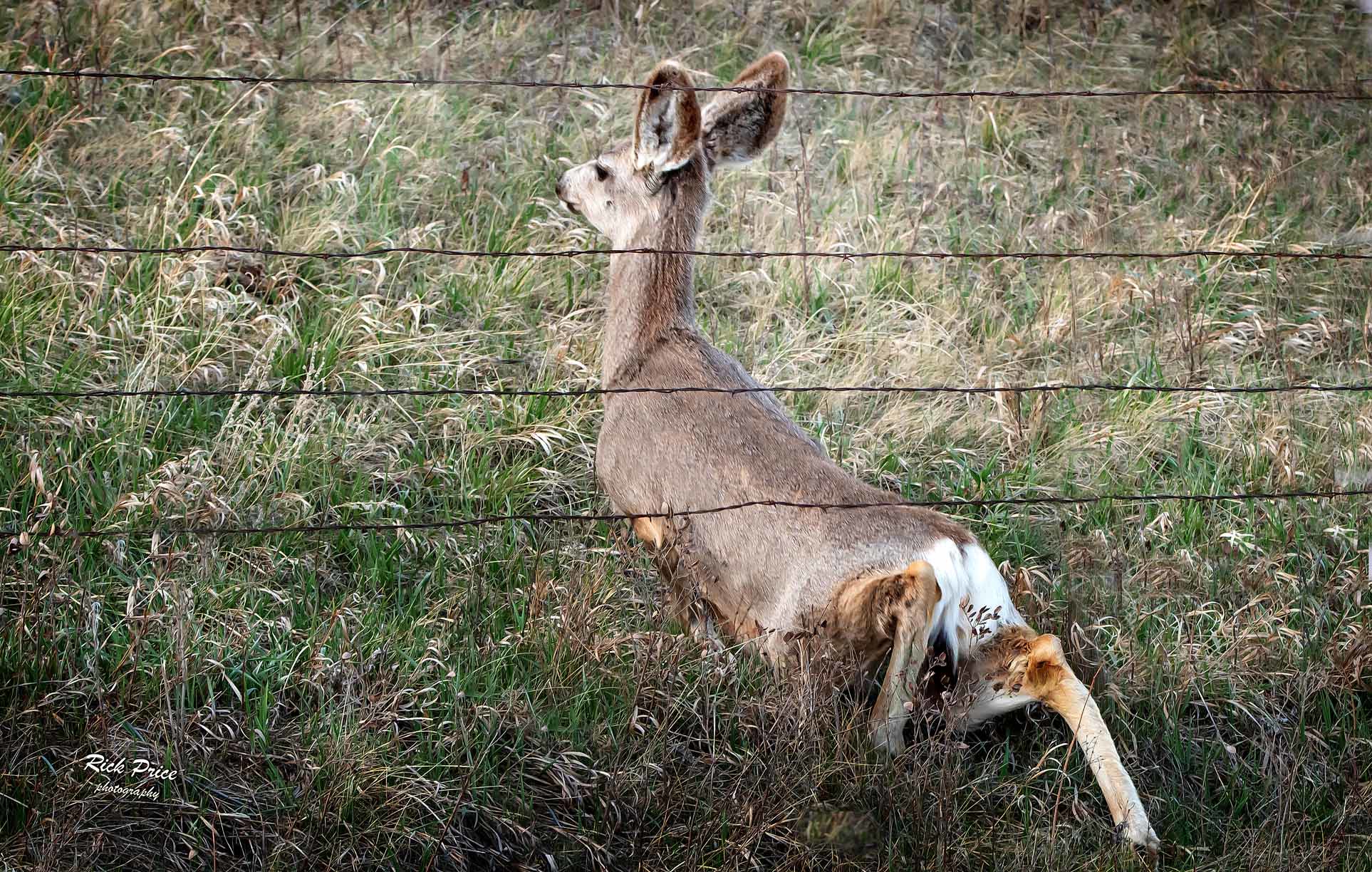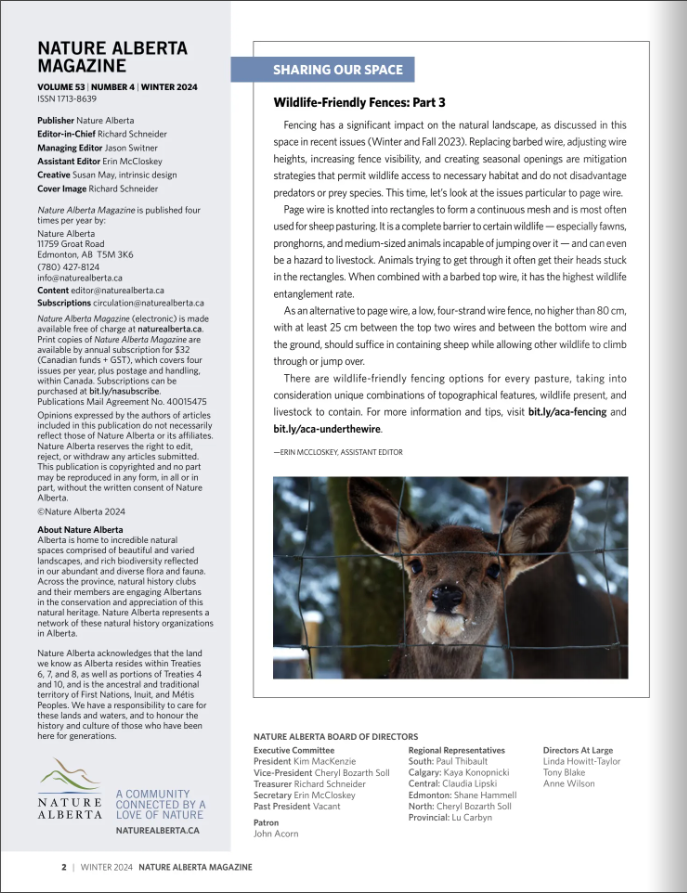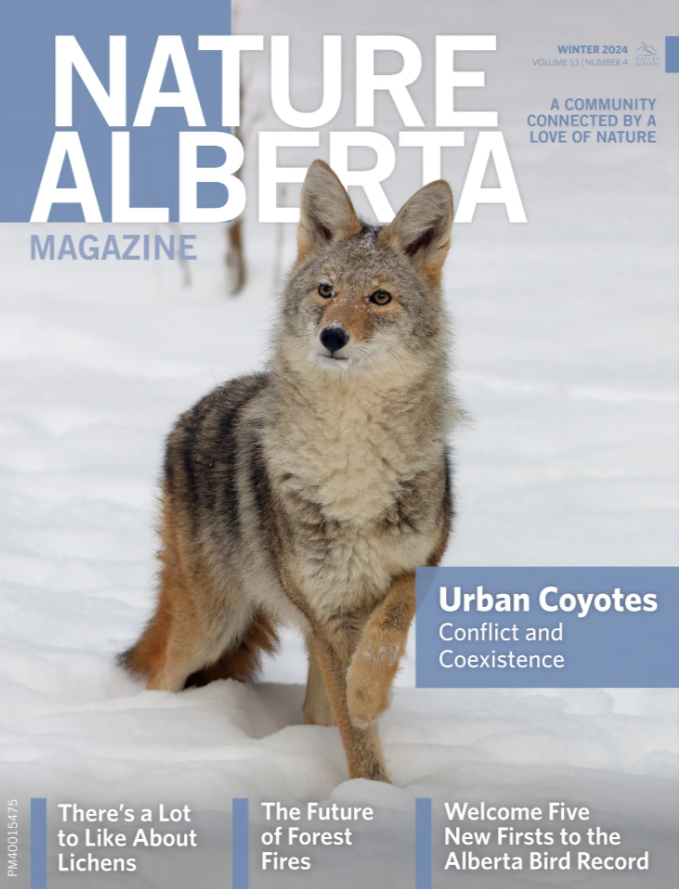Sharing Our Space: Wildlife-Friendly Fences Part 3
15 May 2024

BY ERIN MCCLOSKEY
Fencing has a significant impact on the natural landscape, as discussed in this space in recent issues (Winter and Fall 2023). Replacing barbed wire, adjusting wire heights, increasing fence visibility, and creating seasonal openings are mitigation strategies that permit wildlife access to necessary habitat and do not disadvantage predators or prey species. This time, let’s look at the issues particular to page wire.
Page wire is knotted into rectangles to form a continuous mesh and is most often used for sheep pasturing. It is a complete barrier to certain wildlife — especially fawns, pronghorns, and medium-sized animals incapable of jumping over it — and can even be a hazard to livestock. Animals trying to get through it often get their heads stuck in the rectangles. When combined with a barbed top wire, it has the highest wildlife entanglement rate.
As an alternative to page wire, a low, four-strand wire fence, no higher than 80 cm, with at least 25 cm between the top two wires and between the bottom wire and the ground, should suffice in containing sheep while allowing other wildlife to climb through or jump over.
There are wildlife-friendly fencing options for every pasture, taking into consideration unique combinations of topographical features, wildlife present, and livestock to contain. For more information and tips, visit bit.ly/aca-fencing and bit.ly/aca-underthewire.
Read the Original Article for this Post
For a richer reading experience, view this article in the professionally designed online magazine with all images and graphs in place.
This article originally ran in the Winter 2024 issue of Nature Alberta Magazine (Vol. 53 | No. 4).


